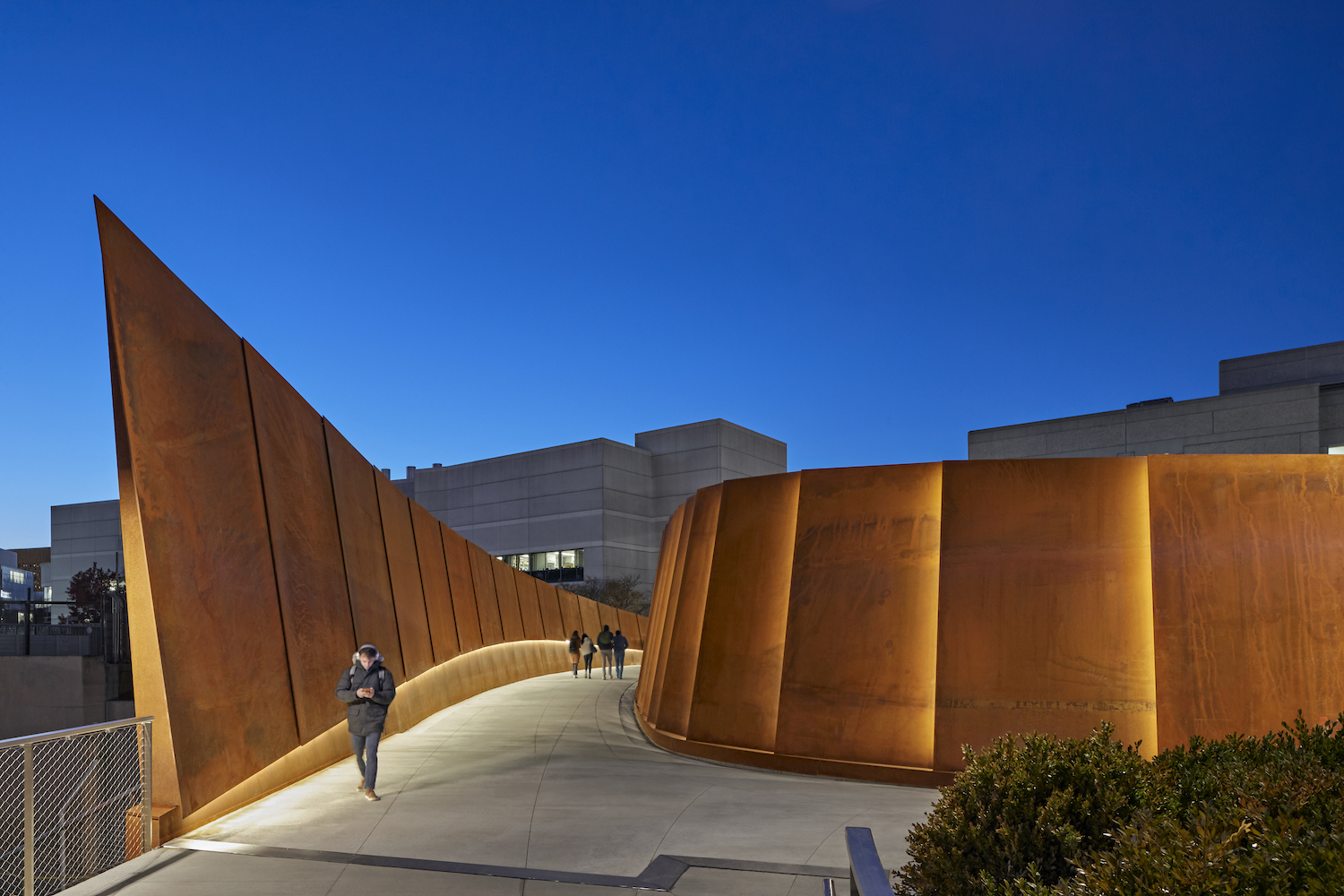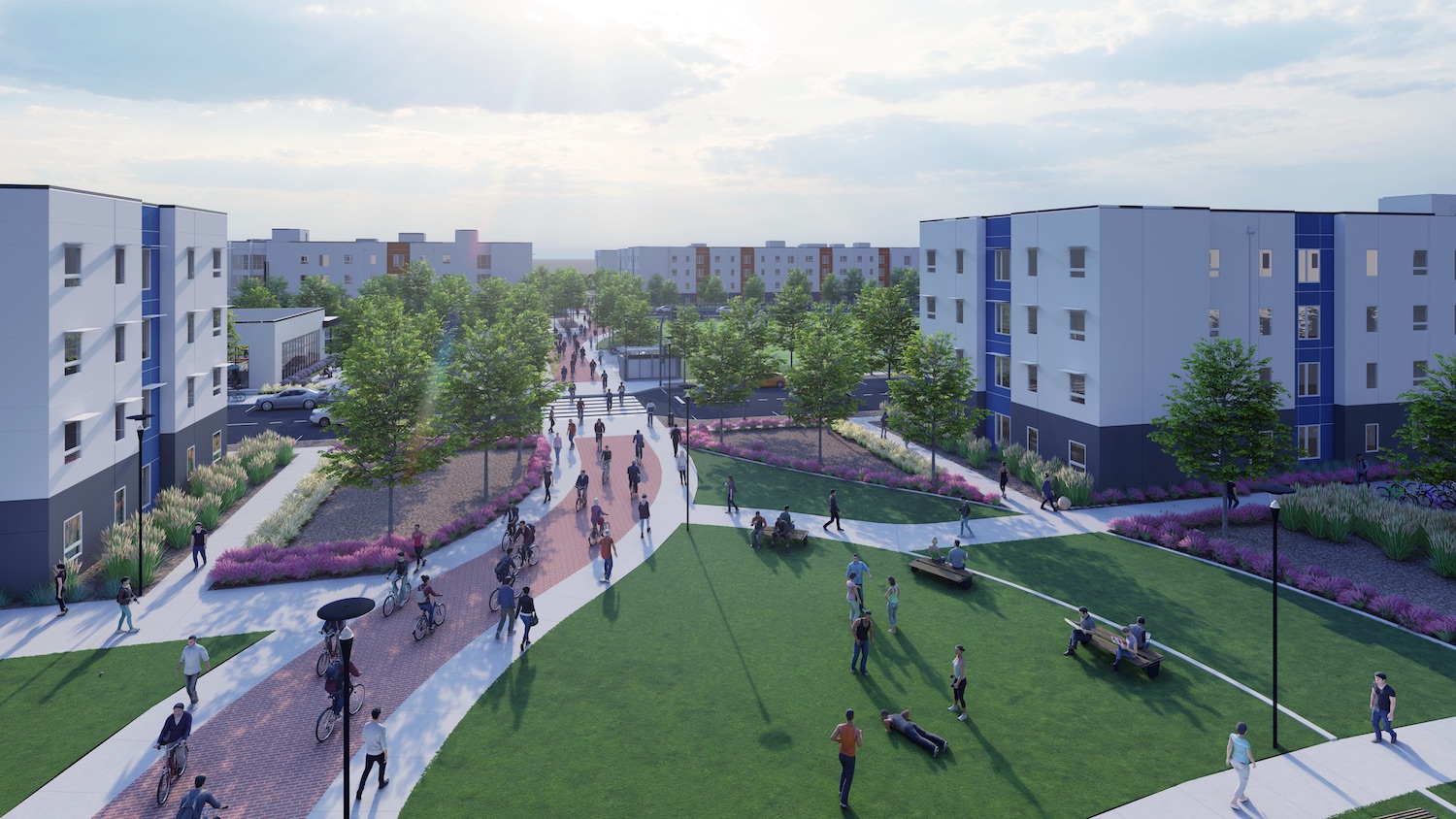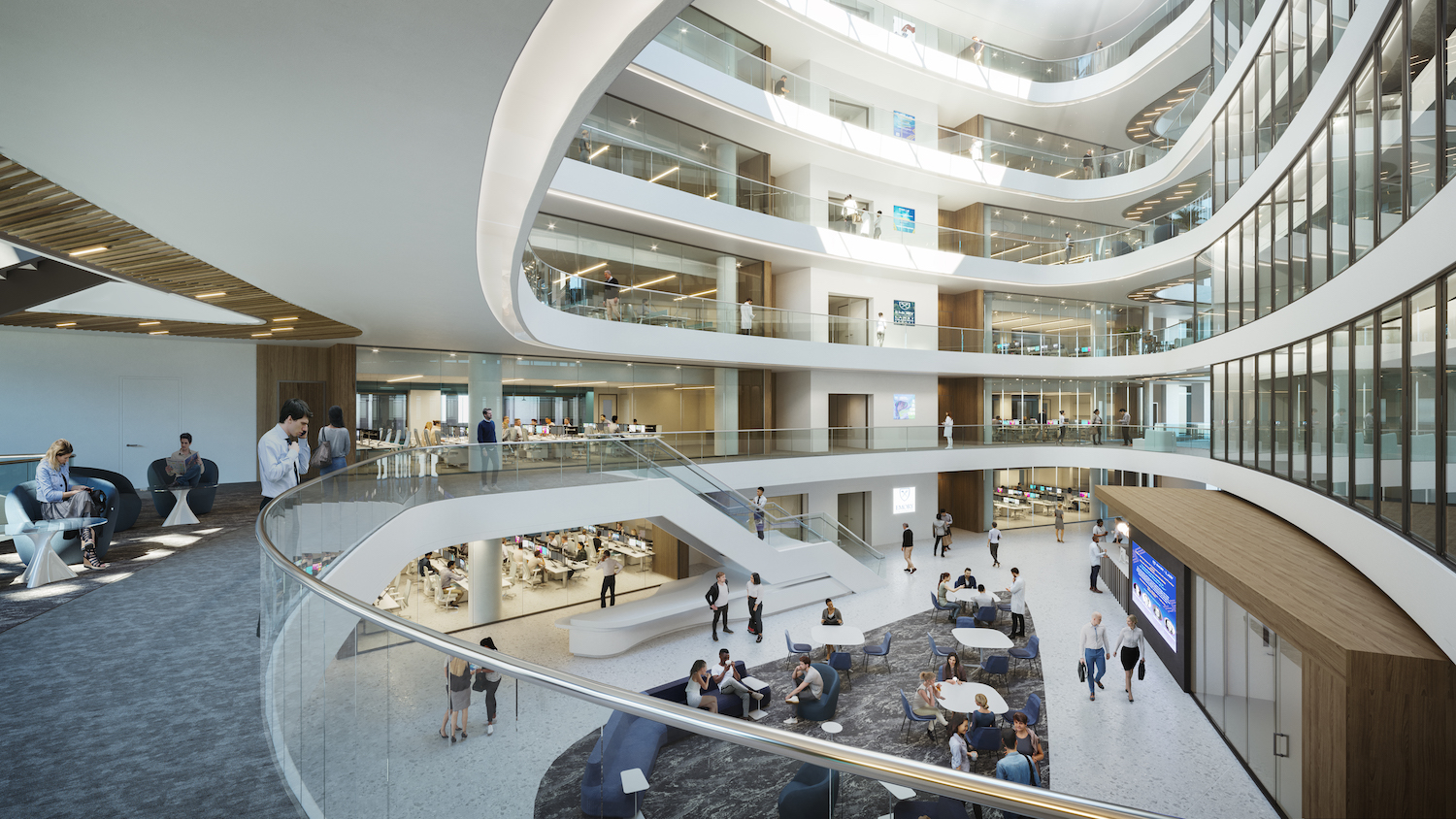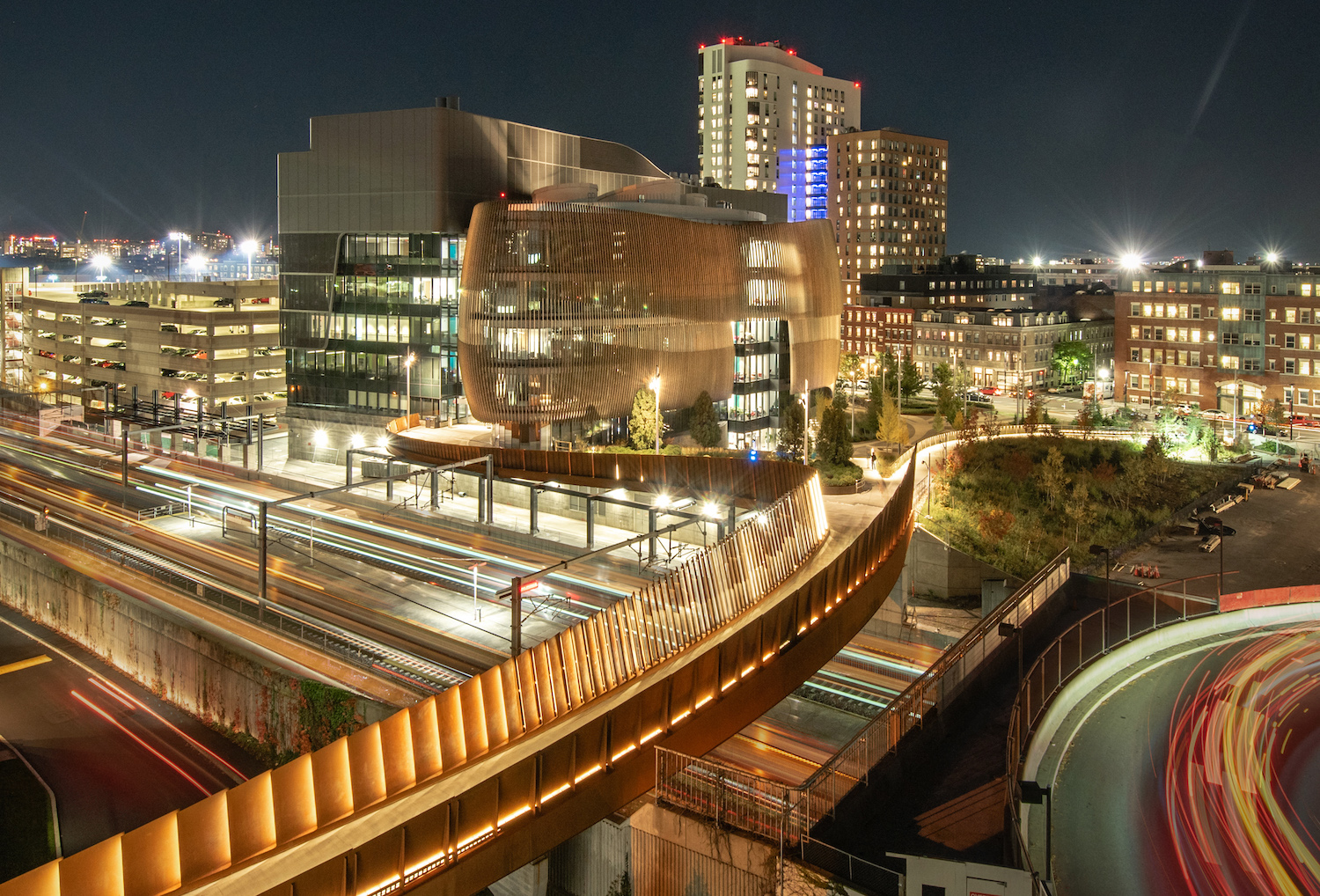Will online learning become a staple for America’s colleges and universities, even after the coronavirus subsides? And if it does, what will that mean for existing and future buildings on campuses across the country?
These have become a fundamental—even existential—questions that AEC firms say their higher ed clients are pondering. While online learning isn’t expected to replace classroom learning over the long run, some firms already see a movement brewing that favors a hybrid model offering collegians both options.
“Colleges and universities are taking immediate steps to de-densify classrooms and residence halls, forcing many institutions to adopt a hybrid pedagogical model whereby approximately one-third of students will receive in-person instruction concurrent with online instruction,” says Patrick McCafferty, Principal and Education Business Leader at Arup’s Boston office. Arup is already sensing diminishing demand for large lecture halls. (McCafferty wonders, though, if a hybrid model might inadvertently create a tiered student experience.)
Chris Purdy, AIA, LEED AP, Vice President and Higher Education Practice Director for SmithGroup, anticipates a “widespread acceptance” of the hybrid learning format. He adds that campus de-densification will require rapid, data-driven strategic planning. Erin Joseph Machau, Jacobs’ Higher Education Market Leader, sees these trends inevitably leading toward more modular and flexible design.

Northeastern University Interdisciplinary Science and Engineering complex. Photo: Tanguy Marquis
“Higher Education will rebound, but the type of projects needed will change,” predicts Machau. “Campus and departmental master planning, facility condition assessments, building and space inventory, and other consulting services will likely increase in need,” as universities lick their wounds from revenue losses, and reboot their space needs in light of what the “campus experience” and “student living” actually mean these days.
“COVID-19 has opened the door for campuses to make big changes for themselves and for their students,” says Tracy De Leuw, DPR Construction’s Higher Ed Core Market Leader. He, too, thinks more schools will focus on hybrid solutions that include combining multiple disciplines—such as business and finance with computer engineering and science—into mini think tanks.
Hybrid learning—such as the HyFlex course design model that gives students the option of attending classes online or physically—depends on technology. Schools are already leveraging technology to offset the impact of social distancing, says Damon Sheppard, HOK’s Regional Leader of Science + Technology. The shift toward learning from home could also spur greater demand for data centers and infrastructure investments, suggests Paul Erb, Executive Vice President for McCarthy Building Companies.
P3s could shore up shortfalls in the university sector
The embrace of hybrid learning, be it tentative or gung-ho, comes at a time when universities are staring at some stark economic realities. The higher education sector is girding for at least a 10% revenue reduction this year as a result of the coronavirus. The suspension of classes and the evacuation of student housing were major hits to many schools’ revenue streams. And going forward, will schools be able to justify what they charge for tuition if courses are delivered online?
The virus “created an unsustainable business model and operating budget gaps,” says Sean Edwards, Suffolk Construction’s COO for Higher Education. That led to pauses in new construction of many capital projects, and slowdowns in the planning and design of projects that weren’t already underway. Erb of McCarthy elaborates that while most of his firm’s higher ed projects already in design are moving forward, future projects have been “pushed out” farther.
Even PCL Construction, which as of mid-June had 23 higher ed projects under construction, expects universities to experience revenue losses from social distancing requirements and the downsizing of dorms, which could force more students into off-campus housing, says Bob Hopfenberg, the firm’s Vice President of National Business Development. PCL predicts more separation within classrooms, and modifications to dorms and residence halls that reduce student occupancies.

Under construction on the campus of the University of California at Davis is the nation’s largest public-private partnership for a student housing project in the U.S. Stantec, The Michaels Organization, and CGB Building Company are part of the team for this complex, which will have 1,875 student beds within nine four-story apartment buildings. Rendering: Stantec
Several AEC firms say their university clients are turning more aggressively to public-private partnerships (P3s) to finance future campus renovation and construction. One of Stantec’s higher ed jobs under construction is at the University of California–Davis: the nation’s largest P3 student housing project to date.
“If universities can’t keep up with demand, they can turn to the private sector for facilities to accommodate student housing and dining,” observes Brent Amos, Principal and Secretary-Treasurer for Cooper Carry. Arup’s McCafferty thinks there will be renewed interest in funding initiatives and investment streams associated with biological sciences and medical research.
The economic turmoil caused by the coronavirus will also thin the herd. Suffolk’s Edwards foresees some smaller institutions merging or being acquired by larger universities. Such consolidations could create opportunities for mixed-use developments that have synergies with universities, such as research labs or commercial space. Other private institutions that don’t choose the P3 or consolidation route might seek to monetize their land assets to generate capital for future construction.
Reassessing space needs in college buildings
The pandemic gave colleges and universities a pressing reason to reevaluate their assets, in order to figure out how they fit into longer-term sustainability plans. For example, about 30% of a typical campus footprint is currently used for administrative and faculty space, notes Patricia Bou, AIA, CannonDesign’s Co-Director–Education Market. Her colleague Charles Smith, AIA, believes that S+T and research facilities could gain importance as part of cross-disciplinary education. “The same goes for healthcare and medical education,” says Smith. “We’re thinking about how to address the intersection of health, science, and data.”
They also suggest that academic institutions should think about alternative uses for dining facilities and recreation centers if their on-campus populations are going to get smaller.
Priorities might change relative to building needs, with a shift in focus toward more adaptation of existing buildings or enhancement of building systems, say Summer Heck, Marketing and BD Manager-Education and S+T at Stantec’s office in Raleigh-Durham, N.C.; and Stephen Phillips, a Vice President at the firm’s Toronto office. “The pandemic will reinforce the rise of renovation and adaptive reuse projects, a trend we’ve been seeing in recent years,” concurs Cooper Carry’s Amos.

Emory University’s Health Research Science Building 2 is scheduled to open in Atlanta in 2022. HOK’s design supports Emory’s campus-wide sustainability efforts and aggressive goals for energy use reduction. Rendering: HOK
Stantec’s executives are seeing a continued focus on career and technical education and skills development. And innovation centers “are at the forefront on institutions’ minds,” they say.
Design professionals like HOK’s Sheppard are now being asked to consider academia’s long-term space strategies, and not just the short-term physical impacts of COVID-19. To that end, Sheppard sees HOK’s role evolving to help clients define how campus space supports their schools’ core missions, determine how much physical space is needed by typology, and assess the value of that space via post-occupancy evaluations.
Suffolk, says Edwards, has moved toward design-assist delivery and virtual design and construction tools to reinforce its expertise to university clients for space planning, building systems, operations, and maintenance.
SmithGroup’s Purdy says his firm is seeing “some exciting opportunities,” including major projects budgeted at $200 million or more, through the firm’s Scenario Mapping projects and CampusForward research. “We are going beyond sustainability and acute shocks, such as earthquakes and floods, to address future disease outbreaks and the chronic stresses of justice and equity.” The goal, he says, is to re-establish the “value” of the on-campus experience.
Related Stories
High-rise Construction | Feb 23, 2024
Designing a new frontier in Seattle’s urban core
Graphite Design Group shares the design for Frontier, a 540,000-sf tower in a five-block master plan for Seattle-based tech leader Amazon.
Construction Costs | Feb 22, 2024
K-12 school construction costs for 2024
Data from Gordian breaks down the average cost per square foot for four different types of K-12 school buildings (elementary schools, junior high schools, high schools, and vocational schools) across 10 U.S. cities.
MFPRO+ Special Reports | Feb 22, 2024
Crystal Lagoons: A deep dive into real estate's most extreme guest amenity
These year-round, manmade, crystal clear blue lagoons offer a groundbreaking technology with immense potential to redefine the concept of water amenities. However, navigating regulatory challenges and ensuring long-term sustainability are crucial to success with Crystal Lagoons.
Architects | Feb 21, 2024
Architecture Billings Index remains in 'declining billings' state in January 2024
Architecture firm billings remained soft entering into 2024, with an AIA/Deltek Architecture Billings Index (ABI) score of 46.2 in January. Any score below 50.0 indicates decreasing business conditions.
University Buildings | Feb 21, 2024
University design to help meet the demand for health professionals
Virginia Commonwealth University is a Page client, and the Dean of the College of Health Professions took time to talk about a pressing healthcare industry need that schools—and architects—can help address.
AEC Tech | Feb 20, 2024
AI for construction: What kind of tool can artificial intelligence become for AEC teams?
Avoiding the hype and gathering good data are half the battle toward making artificial intelligence tools useful for performing design, operational, and jobsite tasks.
Engineers | Feb 20, 2024
An engineering firm traces its DEI journey
Top-to-bottom buy-in has been a key factor in SSOE Group’s efforts to become more diverse, equitable, and inclusive in its hiring, mentoring, and benefits.
Building Tech | Feb 20, 2024
Construction method featuring LEGO-like bricks wins global innovation award
A new construction method featuring LEGO-like bricks made from a renewable composite material took first place for building innovations at the 2024 JEC Composites Innovation Awards in Paris, France.
Codes and Standards | Feb 20, 2024
AISC, AIA release second part of design assist guidelines for the structural steel industry
The American Institute of Steel Construction and AIA Contract Documents have released the second part of a document intended to provide guidance for three common collaboration strategies.
Student Housing | Feb 19, 2024
UC Law San Francisco’s newest building provides student housing at below-market rental rates
Located in San Francisco’s Tenderloin and Civic Center neighborhoods, UC Law SF’s newest building helps address the city’s housing crisis by providing student housing at below-market rental rates. The $282 million, 365,000-sf facility at 198 McAllister Street enables students to live on campus while also helping to regenerate the neighborhood.

















